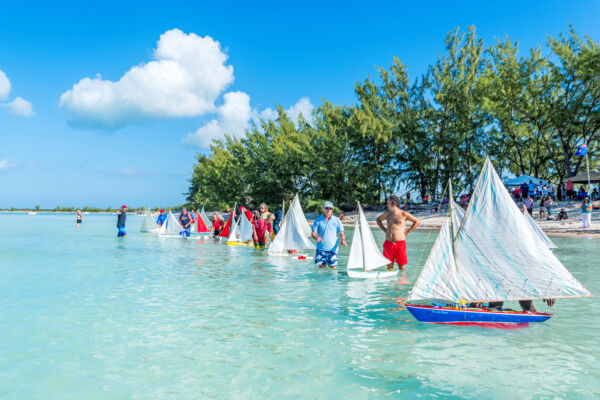Bambarra Middle Caicos

The quiet community of Bambarra , along with Conch Bar and Lorimers, is one of three settlements on Middle Caicos. This small settlement is home to the beautiful and tranquil Bambarra Beach, which is one of the popular attractions on Middle Caicos.
Bambarra is the second largest settlement on Middle Caicos, and nothing much happens in the sleepy village. Only two churches, a school, a few villas, and some private residential homes are found here. No shops or restaurants are located here.
The current inland site of Bambarra, where the churches are found, was once the site of a plantation. Circa late 1700s, George A. Gamble received a British Crown grant and subsequently founded a plantation, and some ruins and field walls from this sea island cotton agricultural attempt still remain.
The Valentine’s Day Cup Model Sailboat Race
Every year on the Saturday closest to February 14, the annual Valentine's Day Cup model sailboat race is held on the excellent and sheltered Bambarra Beach. This event draws in people from across the country and is the only day of the year that Bambarra could be considered “crowded”.

Many of the boat models mimic the smooth lines and simplicity of the Caicos Sloop, a vessel that was essential to the Turks and Caicos in times past.
If you plan to visit North Caicos and Middle Caicos on the day of the Valentine’s Day cup, we advise reserving your rental vehicle well in advance, as availability is often limited. Likewise, the ferries from Providenciales tend to be quite busy, so consider arriving a bit earlier than usual at the dock, or you will likely have to wait more than an hour for the ferry to make a round trip.
Origin of the Name and History
Many of the residents of Middle Caicos and North Caicos are descendants of Trouvadore passengers, a Spanish slave ship that was shipwrecked in 1841 near East Caicos. Due to the fact that the slave trade was illegal in both the United Kingdom and Spain at this time, the ship was operating illegally and exact records of its origin and route are not known.
Many Caribbean slaves had their ancestral origins from the western coast of Africa. Mali (located on the western part of Africa) is home to a large ethnic group called the Bambara (with a single ‘r') people, and it’s quite possible the slaves were from this group. This is a likely origin of the current name Bambarra.
This village is the namesake for Bambarra Rum, a rum-blender company based in Providenciales.
Corry Pond
An interesting natural Karst feature is found to the west of Bambarra.
Quite apparent from aerial images, Corry Pond is a perfectly circular sinkhole that reaches a depth of about 40 feet (12 m). This strange feature exhibits distinct and strong haloclines (water layers of high salinity) and thermoclines (water layers with distinctly-varying water temperature), as well as deep red and green colors in the distinct upper water layers. Corry Pond is reminiscent of and likely an example of one of the globally rare Black Hole Karst features that are only found on Andros Island and Grand Bahama Island in the Bahamas, and of which there are only thirty known in the world.
Another interesting element here are the man-made rock walls inside the pond. The purpose and age of these features was lost until recently, when the research of archaeologists and a local botanist concluded that they were sisal “rock corrals”.
In the latter 1800s and early 1900s, sisal agave was raised in the Turks and Caicos for the production and export of rope fibers. The large sisal agricultural attempts on East Caicos and at Yankee Town on West Caicos had steam and kerosene power and used T. A. Smith’s patent “Fiber Decorticating Machine” to separate the fiber from the plant stalks, yet the smaller farms and plantations were not so fortunate, and had to practice the time-consuming process of soaking the stalks and then beating them against a hard surface by hand to extract the material. The rock corrals simply contained the stalks while they soaked.
